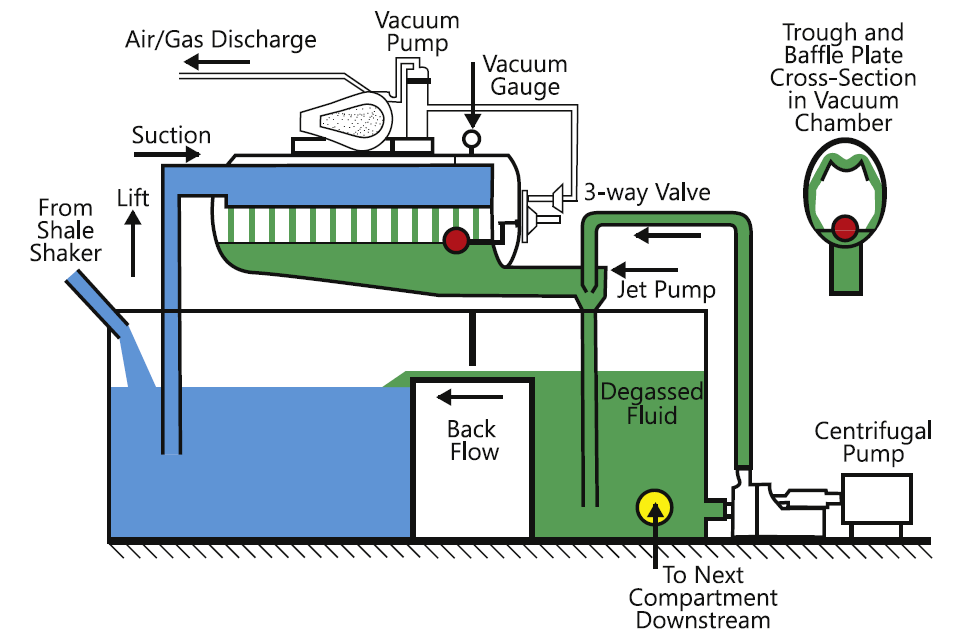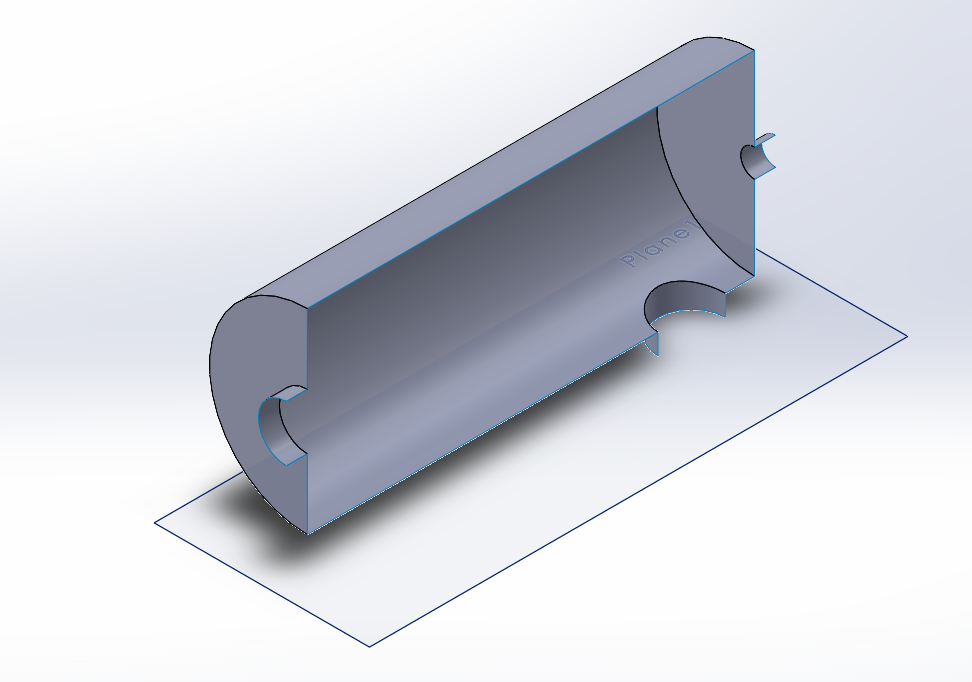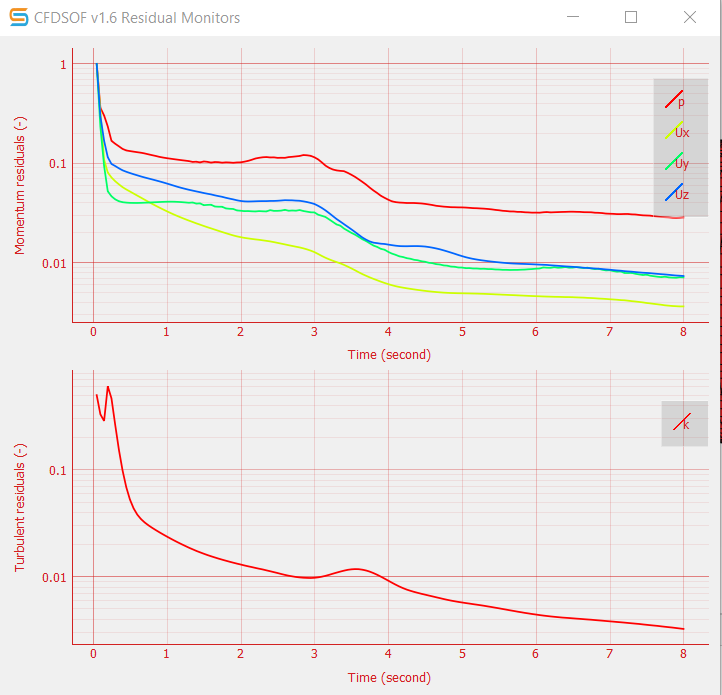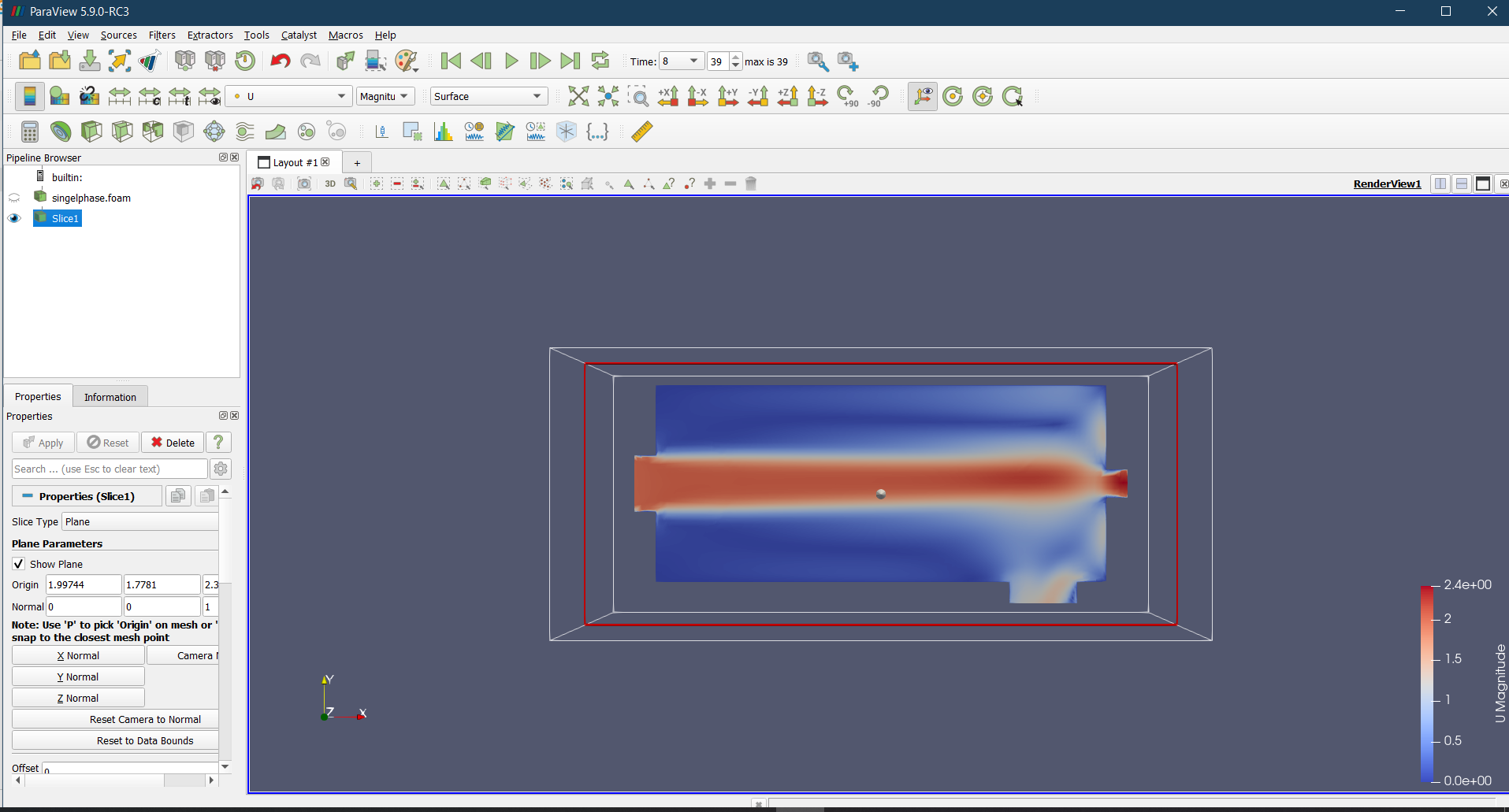Vacuum Degasser for Mud Gas Separation System under Various Suction Pressure
Authored by
Muhammad Abi Rizky, Department of Mechanical Engineering, University of Indonesia
Contents
Abstract
In the oil and gas industry, the use of circulating fluid is essential to ensure the hole is clean from the rock cuttings, as well as to provide cooling to the heavily used BHA systems. To ensure the performance of the drilling mud, it has to be conditioned properly on the surface by cleaning it from cuttings with a mud filter, as well as separating the gas contained from the mud using a degasser system. H2S gas contained within the rock formation comes from the fluids in HPHT wells which when unfiltered from the mud, may corrode the downhole tools. In the industry, there are many types of degasser used, such as horizontal flow degasser, vertical flow degasser, as well as vacuum degassers. By using the vacuum degassers, the gas outlet is pulled by the pressure differential, while the drilling fluid flows down due to gravity from the horizontal inlet. The goal of this study is to recreate the system using CFD, and by creating variations of the pressure outlet for the gas, determining the optimum pressure differential so the gas can be pulled effectively from the mud while remain power efficient.
1. Introduction
In an oil drilling operation, drilling fluids, also known as drilling muds is used to clean the borehole by lifting the rock cuttings to the surface. As the fluid flows from downhole towards the surface, the rock formation surrounding it may exert gases known as formation fluids, which contains H2S in gaseous phase. The gas then flows towards the surface alongside the drilling mud, and this multiphase flow will cause the contained H2S gas to form bubbles within the mud flow. These bubbles may cause severe damages towards all kinds of systems used in the operation, such as the centrifugal pumps used to recirculate the mud downhole, downhole drilling motors used in directional drilling, as well as the drill bits, as the acidic nature of the gas may cause failures to these tools. And as such, the use of mud gas separator becomes essential in the industry.
The mud gas separator system is used to separate the gas from the drilling mud, as the name implies. There are two main types of degassers used in the industry; the vacuum degasser and the atmospheric degasser. Vacuum degassers use a combination of turbulent flow and reduced internal tank pressure to move gas-cut drilling fluid and release gas bubbles, while an atmospheric degasser uses a submerged centrifugal pump to spray the drilling mud in a thin sheet of drilling fluid against the wall of a tank. This study will be focused on analyzing the vacuum degassser using computational fluid dynamics (CFD) method.
The vacuum degasser systems use vacuum pumps to extract the H2S gas bubbles from the drilling fluid. These vacuum pumps are used to suck in the gas within the degasser's tank, while the drilling fluid flows downwards due to gravity. The gas contained within the drilling fluid is not to flow downwards alongside the drilling mud, which is why the suction pessure of the vacuum pump has to be optimized. The suction pressure has to be enough to suck in the gas from within the bubble, while utilizing as minimum power as possible, and as such, the variation of suction pressure of the gas outlet is studied.
Objectives
This work aims to simulate using CFD to analyze the effect of geometrical parameters to its flow pattern and characteristics. In more detail, the research objectives are as follows:
1) To analyze the variation of suction pressure against the time it takes for the gas to separate from the mud;
2) To analyze the possible geometrical optimizations gained from the flow patterns, such as by observing pressure drops, wakes, or other fluid dynamical phenomenona which may occur within the degasser;
3) To analyze the possible developments of the degassers based on the numerical simulation results;
The following chapters after this introduction will be structured as follows: 1) methodology, which explains about the fluid model and parameters, software utilized in this research, and computational method; 2) Results and discussion; and 3) Conclusion.
2. Methodology
This chapter outlines the methodology chosen for this work. The model assumption and verification will discuss the theory that will be the basis on model assumption, flow parameters, and boundary condition.
2.1 Geometrical Model
The geometry used for this study is the vacuum degasser, however the overall design is simpliefied to have no inside pipe. The overall diameter of the tank is set to be 1400 mm, the mud and gas inlet is set to be 400 mm, then the gas outlet at 200 mm, and mud outlet at 500 mm. The dimensions are set in such a way that the volume flow rate ratio of gas and mud are roughly 2:5 at their respective outlets.
2.2 Parameters to be Analyzed
In this study, the independent variable is the outlet suction pressure for the H2S gas, while the dependent variabkle is the time it takes for the given gas to exist the system through the said outlet. The suction pressure is going to be set at atmospheric pressure, then varied down in 1 kPa increments to around 95 kPa of absolute pressure within the gas outlet.
2.3 Fluid Properties
The fluids used in this project are water-based drilling fluid of 0.5% starch which has density of 1050 kg/m^3, and dynamic viscosity of 0.001 Pa.s and H2S gas under atmosepheric condition which has mass density of 1.36 kg/m^3 and dynamic viscosity of 0.00012 Pa.s.
2.4 Simulation Model
The simulation for this study is going to be set to be transient (0.05 s of delta t for 8 seconds of simulation), incompressible, subsonic, multiphase with VoF method, and turbulent with LES, includes gravity forces, and set to be isothermal (no energy equations). The inlet will contain both mud and gas in a mixture, set to flow at 0.1 kg/s. The mud and gas will have different outlet which shows their separation from one another, under various suction pressure.
2.3 Software Description
The geometry for this study was desgined using SolidWorks. Then the research will utilize CFDSOF, a CFD software developed by CCIT Group. CFDSOF has been widely used, especially in Indonesia, by several universities and state-owned enterprises projects. The mesh generation and CFD simulation is conducted using CFDSOF. The result is then post-processed and presented using Paraview.
3. Results and Discussion
3.1 Single Phase Test
The first step of this study is the single phase test to ensure the model is correctly set. First, the meshing process was done using CFDSOF and gives fine results. The mesh options were chosen to ensure accurate calculations that can be achieved by using CFDSOF. The test is done using a single phase flow of drilling fluid under the given parameters mentioned on the previous section.
The meshing prcess gave great results as the software was able to create fined surfaces to ensure satisfactory results. The surface was refined at the maximum 2 with the Nx, Ny, and Nz of the mesh was set at 80, 40, and 40, respectively.
The meshes above will be set as the baseline for the following tests.
The result of the single phase test yields the following in the residual monitor.
The monitor above shows the residual of the simulation going down over time, showing the convergence of the test. The results are good as expected, as shown from the results of the velocity and pressure gradients below.
Results above show the pressure and velocity gradients of the slice. The flow of the mud is sucked in to the outlet as it flows inwards at 2 m/s. This result is expected as somehow the gravity effects are ignored in this test. CFDSOF gave adequate results for predicting the flow regime as it could perform such test fine. The pressure distribution results was also as expected, therefore the mesh and the model should be sufficient to simulate the multiphase flow of drilling mud and H2S gas.
3.2 The Failed Multiphase Flow Simulation of Drilling Mud and H2S Gas
The next step was to perform multiphase simulation. During the simulations, the author was faced with a number of difficulties. At first, the was to use VoF or Eulerian-Euleriian methods, CFDSOF solver was unable to perform either correctly. The solver refused to start performing the calculations when VoF was chosen, giving null results at the logs, whereas the Eulerian-Eulerian method couldn't be chosen. As such the author then chose to perform the Eulerian-Langrangian, even though by doing so the model would be incorrect as the viscous effects of the H2S gas would have to be ignored.The viscous effect between the H2S gas and the drilling mud is essential for this process, as the gas was supposed to partially mixed in the mud, which the suction outlet pump was designed to separate.
Then the study proceeded with the Eulieran-Langrangian method. The first step was to set the conditions of the flows. It was set as before, ensuring the turbulence modelling was set correctly, checked gravity, and boundaries checked. The inlet was set to be an velocity inlet patch, with the fluid flowing at 1 m/s, then both outlet was set as outflows, while the degasser body was set as wall. The injected particles was set to be injected for 4 seconds, making it half of the simulation time, with 10000 as the number of parcels. Then the study proceeded for the trial and errors to determine wheter or not the parameter and the boundary conditions set yield the expected results.
Then after testing and redoing the process over and over, with various changes made to the set parameters to ensure that they were set correctly, none of the trials with multiphase flow yield definite results. The solver always crashes after performing simulations for some time, or returns bad results by such as high residues which yields the unsatisfactory results.
4. Conclusion
The tests did not go as planned as the multiphase flow did not yield the results as expected. Both the VoF and Eulerian-Eulerian methods could not start, and the Eulerian-Langrangian simulation either fails by crashing the solver or gives bad residues, making the results unsatisfactory. As the goals of this study was to see how the effectiveness of several suction pressures in the gas outlet, the solver failed to perform and calculate, causing the performance of the mud degasser cannot be studied as of yet. However, CFDSOF was able to simulate the flow behaviour in a satisfactory manner under the singlephase flow, which may be used as a base for further studies as the software is updated and made to be more refined.
Presentation Video - Muhammad Abi Rizky
Acknowledgement
This research was conducted as a final project for the Computational Fluid Dynamics course, in Mechanical Engineering Department, Universitas Indonesia. The author thank Dr. Ahmad Indra as our advisor and lecturer, and also Bang Edo, Bang Bani, Bintang, Ales, Mas Agus, and all other students for the valuable discussion in creating this research paper.







